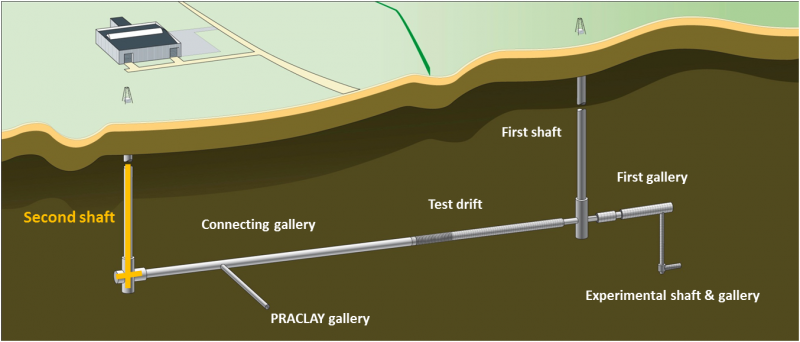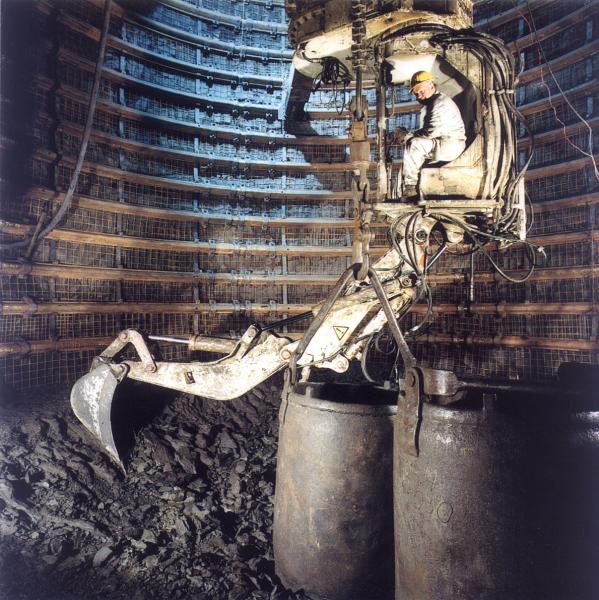Second shaft (1997-1999)
 |
 |
The construction of the HADES underground research laboratory (URL) in the Boom Clay formation, which began in 1980, was important for testing and improving the excavation and construction techniques used and for demonstrating the technical feasibility of building an underground repository.
The construction of the earlier parts of the HADES URL between 1980 and 1987 proceeded manually, achieving a relatively low progress rate of 2 metres a week. During the 1990s, it was decided to extend the HADES URL to demonstrate the feasibility of constructing shafts and galleries on an industrial scale, using industrial tunnelling techniques. Due to the requirements of the mining regulatory body, it became mandatory to construct a new shaft before conducting any new large-scale work in the HADES URL. In the first phase (1997-1999), a new, second access shaft and two starting chambers were constructed. The next phase (2001-2002) was the excavation of an 85 m long connecting gallery between the new shaft and the existing facility.
OBJECTIVES
In addition to the first objective to create a second access shaft in an industrial way, the second objective was to excavate the part of the shaft located in the Boom Clay without using ground-freezing techniques.
OUTCOME
The feasibility of industrial excavation of shafts in the Mol region in frozen sand layers and non-frozen Boom Clay has been demonstrated. The lining techniques used proved to be adequate. The favourable geo-mechanical behaviour of non-frozen Boom Clay for excavation work that was observed during the construction of the small experimental shaft in 1983 and the second gallery (Test drift) in 1987 was demonstrated once again. The scientific programme resulted in a detailed geological characterisation and description of the layers traversed.
The construction of the second access shaft was an important milestone in the RD&D programme of ONDRAF/NIRAS on geological disposal of radioactive waste in poorly indurated clay.
SUMMARY
REFERENCE PUBLICATIONS
Ramaeckers C., Van Cotthem A. & De Bruyn D.J., 2000. Construction d'un second puits à Mol dans le cadre des études pour l'enfouissement géologique des déchets hautement radioactifs en Belgique. Tunnels et ouvrages souterrains vol. 162, 315-325.
Bernier F., Buyens M., De Bruyn D., Barnichon J.D., Wemaere I., De Craen M., Volckaert G., De Cannière P., Brosemer D., Van Cotthem A., Ramaeckers C., 2000. Natural and artificial discontinuities in Boom Clay, ref. FB/00-150, EIG EURIDICE, Mol.
